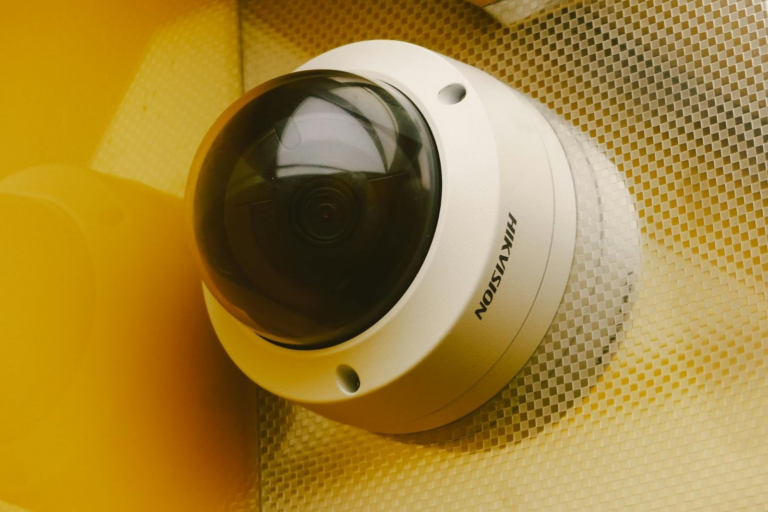How to Monitor CCTV Cameras from Abroad?

Consider the peace of mind of running your business from a beach in Bali. Monitors are no longer chained down. Modern systems provide remote access via secure mobile applications, web interfaces, and third-party software such as Wolfeye enabling authorized personnel to monitor business operations from any global location with an internet connection.
Modern CCTV cameras make remote surveillance easier. This improves security by allowing for real-time surveillance, while also facilitating proactive management with features such as employee monitoring and customer traffic analysis.
Learn how to monitor CCTV cameras from abroad in the sections below.
What is CCTV
Have you ever wondered about the cameras you see in stores and buildings? Those are CCTV cameras, which stands for Closed-Circuit Television.
Unlike cameras, which broadcast footage to the public, CCTV creates a private network. Think of it like a walkie-talkie: the video signal is sent from the camera to specific monitors or recording devices rather than out into the world.
These cameras are constantly recording what happens around them. The footage is then transferred to a DVR or NVR (similar to a video recorder) for storage. You can also watch the live feed from the cameras on a dedicated monitor, or from your phone or computer via remote viewing.
So, whether you are a business owner or a security guard, you can monitor what’s going on in real time.
Remote Monitoring using IoT

The Internet of Things (IoT) is transforming remote monitoring across multiple industries. Businesses can use IoT to overcome geographical boundaries and collect real-time data on their devices or operate from anywhere, at any time.
This translates to significant benefits, including enhanced productivity, cost savings, client satisfaction (due to better service), and less equipment downtime. It benefits both businesses and customers!
IoT is used by certain apps, such as Wolfeye, to offer centralized security camera monitoring from a single interface. By doing this, business owners can remotely monitor several locations, enhancing operational effectiveness and security.
Difference between Traditional and Modern Surveillance

Modern IP camera systems outperform traditional CCTV, providing several key advantages.
Resolution
Say goodbye to blurry photos. IP cameras transmit digital data via networks, resulting in crystal-clear, high-definition video as opposed to the lower resolution limitations of analog signals in traditional CCTV.
Scalability
An old-fashioned CCTV system’s wiring nightmare of an expansion limits the number of cameras you can use. Scaling modern IP camera systems is simple. Simpler network connections make it easy to add more cameras.
Remote Access
Put an end to being chained to a monitor. Only screens that are physically attached to the system can display footage from a traditional CCTV system.
Modern IP cameras provide web interfaces and apps for remote access. With an internet connection, you can now monitor things from any location.
Set up Remote CCTV Access
This section will cover how to configure a system so that it can be remotely used to monitor CCTV from overseas.
Web Interface
Easy and mobile access! You can do away with the intricate setup when you use IP CCTV cameras. No expensive hardware or software is required. All you need to do is grab your tablet or smartphone that is connected to the internet.
The web interface of most camera manufacturers is easy to use. This implies that you can use any web browser, such as Chrome or Firefox, to view your camera feeds from anywhere. The IP address and login credentials of the camera are all that are required.
Mobile App
Using a mobile app, view your cameras from any location. Simple setups are unnecessary; just download and open the app from the manufacturer of your security camera. You can access your cameras anywhere, at any time, with a smartphone or tablet and an internet connection.
These useful apps have a tonne of features that allow you to:
- Be informed: Get immediate alerts if motion is detected.
- Communicate: When communicating through your cameras, use two-way audio.
- Additional Features: Zooming in for a closer look and watching high-definition videos are features that many apps offer.
Using Third Party Software
Third-party software such as Wolfeye can also be used as remote desktop software. It offers a central hub for controlling several cameras from a single user interface.
With Wolfeye, you can enjoy features like multiple camera views, and sophisticated playback controls with timelines and filters. Furthermore, everyone can navigate it easily thanks to the user-friendly interface.
A VPN (Virtual Private Network) can also assist if security settings or firewalls prevent you from connecting directly to your CCTV cameras. A virtual private network, or VPN, forms a safe tunnel between two computers so that one can serve as a secure gateway and connect the other.
CCTV on the go: Simple to set up
Set up your IP camera for remote viewing in a flash (under 2 minutes!)
- Get the App: Install it on your PC or phone.
- Add your camera: Open the app, then type the unique ID number of your camera.
- Start Viewing: To view your live camera feed from any location with an internet connection, click the camera icon in the app.
Security Considerations While Abroad
While working remotely can be flexible, security lapses are risky. The following actions will help you strengthen your defense:
Use a Secure VPN
A secure VPN disintegrates the data you send and receive, making it inaccessible to prying eyes. Select a reliable VPN service provider and use excellent encryption protocols such as IPsec or OpenVPN.
Implement Strong Passwords
Consider passwords to be your digital kingdom’s keys. Use a combination of capital and lowercase letters, numbers, and symbols to make them powerful and intricate.
Never use pet names, birthdays, or other easily guessed information. Avoid using the same password for multiple accounts and change them regularly.
Enable Two Factor Authentication
This provides an additional level of security. To access your system, even if someone manages to get your password, they will also require a unique code, which is typically texted to your phone. For added security, if it is available, enable two-factor authentication.
Maximizing Remote Monitoring Experience
While basic monitoring is possible through remote viewing, several advanced functions give users access to a fully comprehensive security experience.
Motion Detection
IoT-enabled smart cameras with motion detection capabilities can detect motion in real time. When the owner of the building or property is not there, this feature makes it possible for the camera to recognize specific moments and notify users.
Two Way Audio
A lot of intelligent security cameras can record in both directions. This implies that users can now communicate in real time with those who are in front of the camera. It allows for easy family check-ins, guest communication, and even remote pet monitoring.
Cloud Storage
One feature that a lot of smart security cameras have is the ease of using cloud storage for video recordings.
With the convenience users can now access their recorded videos from any location, data security is ensured and concerns regarding footage loss owing to camera malfunction are eliminated.
Night Vision
Smart security cameras can monitor 24 hours a day and have nighttime vision capabilities. This enables them to record clear videos in dimly lit areas or even in complete darkness. By doing this, it is ensured that security coverage is maintained at night.
Conclusion
A wide range of benefits are offered by remote CCTV monitoring. Assisting people in ensuring the safety of their belongings when they are away from home, makes people feel more at ease. With developments like facial recognition and AI-powered alerts potentially providing even more advanced security solutions, the future of remote monitoring appears even more promising.